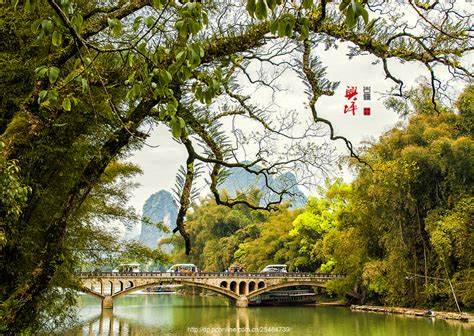Xingping Ancient Town in Yangshuo, Guilin, lies like a living ink-wash painting along the Li River, quietly resting for over 1,700 years. Its winding bluestone streets, flanked by gray-tiled wooden houses bearing the marks of time, whisper tales of the Three Kingdoms through ancient bridges, opera stages, and Guandi temples. From the old dock, visitors gaze at the “Huangbu Reflection” featured on China’s 20-yuan banknote—the emerald Li River mirrors karst peaks like polished glass on sunny days and veiled silk in the rain, while bamboo rafts gliding by seem to open a door to fairyland.
The Nine-Horse Fresco Hill stands as nature’s masterpiece, its cliff patterns forming nine galloping steeds. Locals joke, “Spot seven horses to earn scholar status, nine to become a top scholar.” Nearby fishing villages exude rustic charm, drawing fame after U.S. President Bill Clinton’s 1998 visit. Climbing Laozhai or Xianggong Mountain rewards hikers with panoramic views of the Li River’s sweeping S-shaped bend. Marshal Ye Jianying marveled, “True beauty resides in Xingping,” while artist Xu Beihong declared, “Yangshuo’s finest scenery is here.”
By night, the town transforms: a riverside fishermen’s market twinkles with lights, food stalls waft scents of oil tea and rice noodles, and shops display bamboo crafts and embroidered balls, blending bustle with warmth. Dawn brings tranquility—elders chat on the smooth stones of Qianyuan Bridge, its surface pitted by centuries of dripping eaves, while remnants of a Tang-era hexagonal pavilion, adorned with stone carvings of dragons and phoenixes, silently recount history.
Today, Xingping thrives through preservation. Electric rafts replace noisy boats to reduce disturbances to the river, and restored ancient streets balance old homes with new shops. As a granny selling osmanthus cakes says, “Don’t worry if you can’t find all nine horses—the mountains and waters remember your journey.” Every brick, hill, and ripple here is both time’s gift and a millennium-spanning tale of harmony between humans and nature, written in stone and water.

发表回复
要发表评论,您必须先登录。